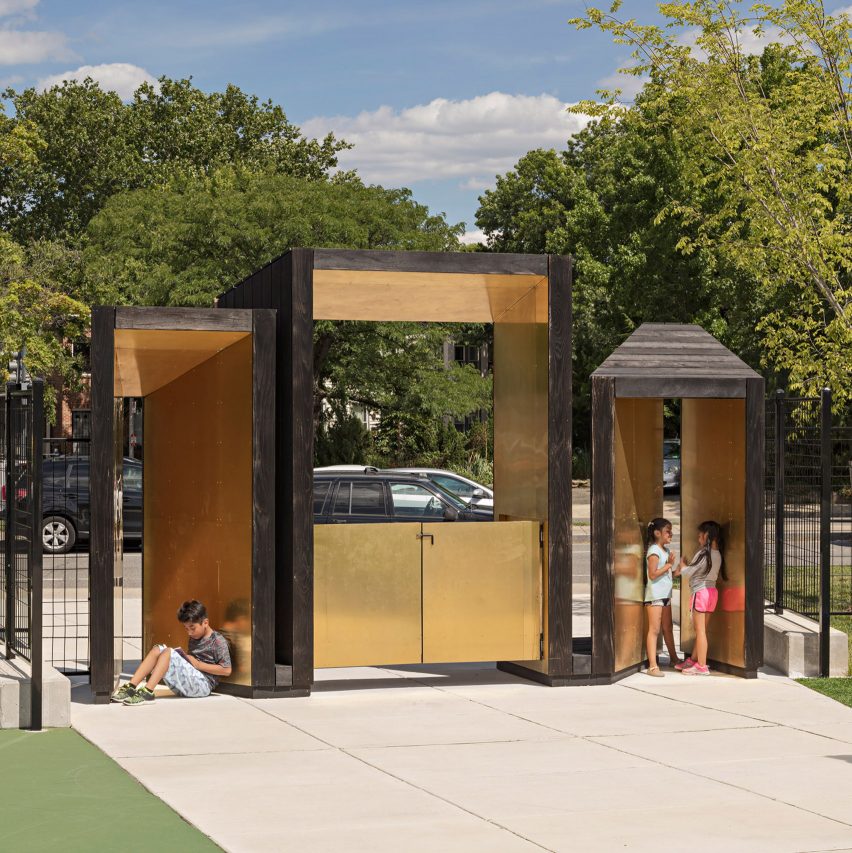
Three charred wood structures with brass interiors form a memorial that pays homage to African American history at the entrance to a school and park in Washington DC.
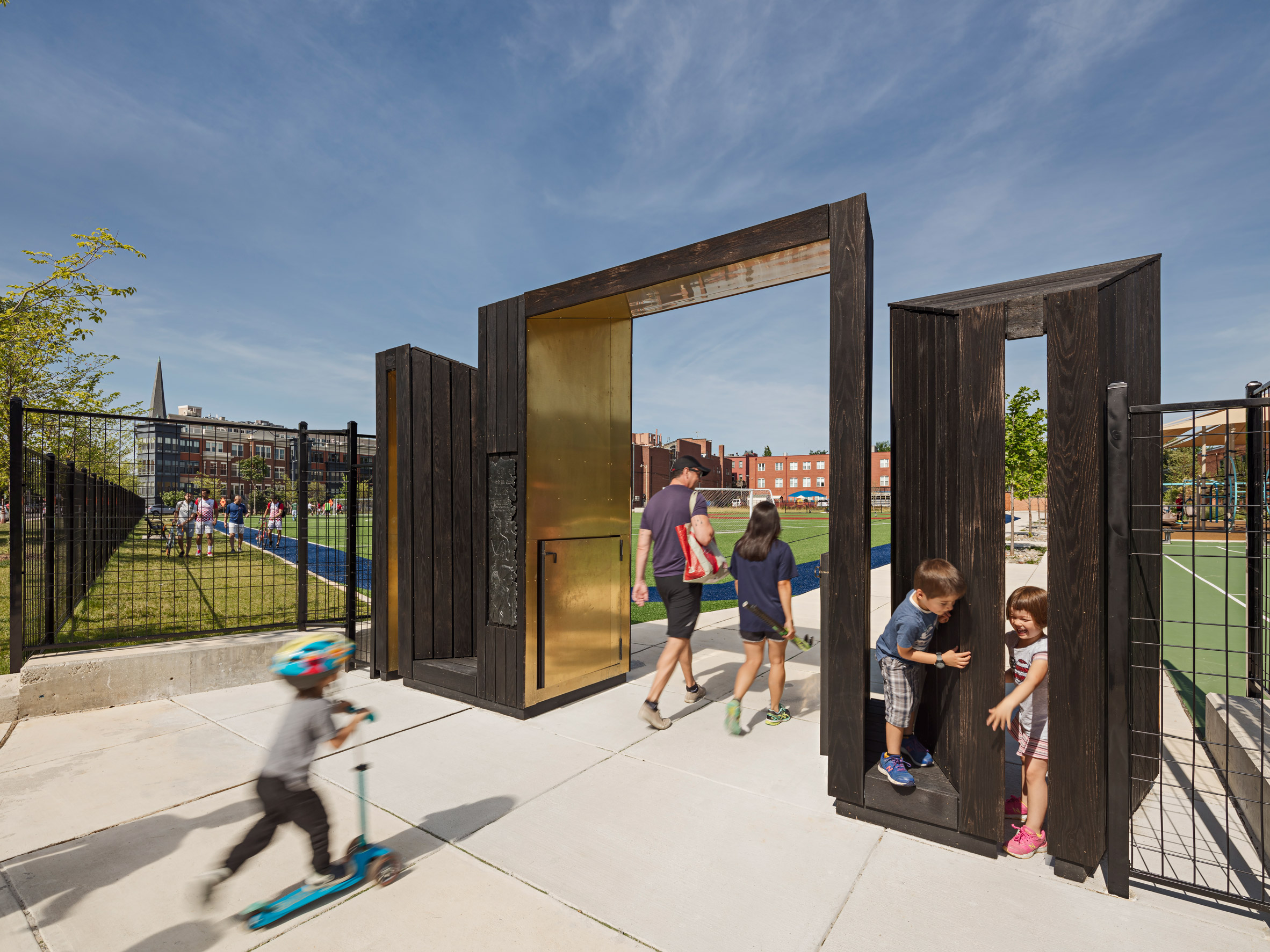
Tennessee studio After Architecture has constructed the Camp Barker Memorial on the grounds of Garrison Elementary School to be a "functional, educational and commemorative" monument to America's history of oppression.
During the Civil War, the site was a "contraband camp" used to house former black slaves who had been captured by the Union army. The studio designed the memorial to honour the ground's history, while still maintaining its use today as a shared community space.
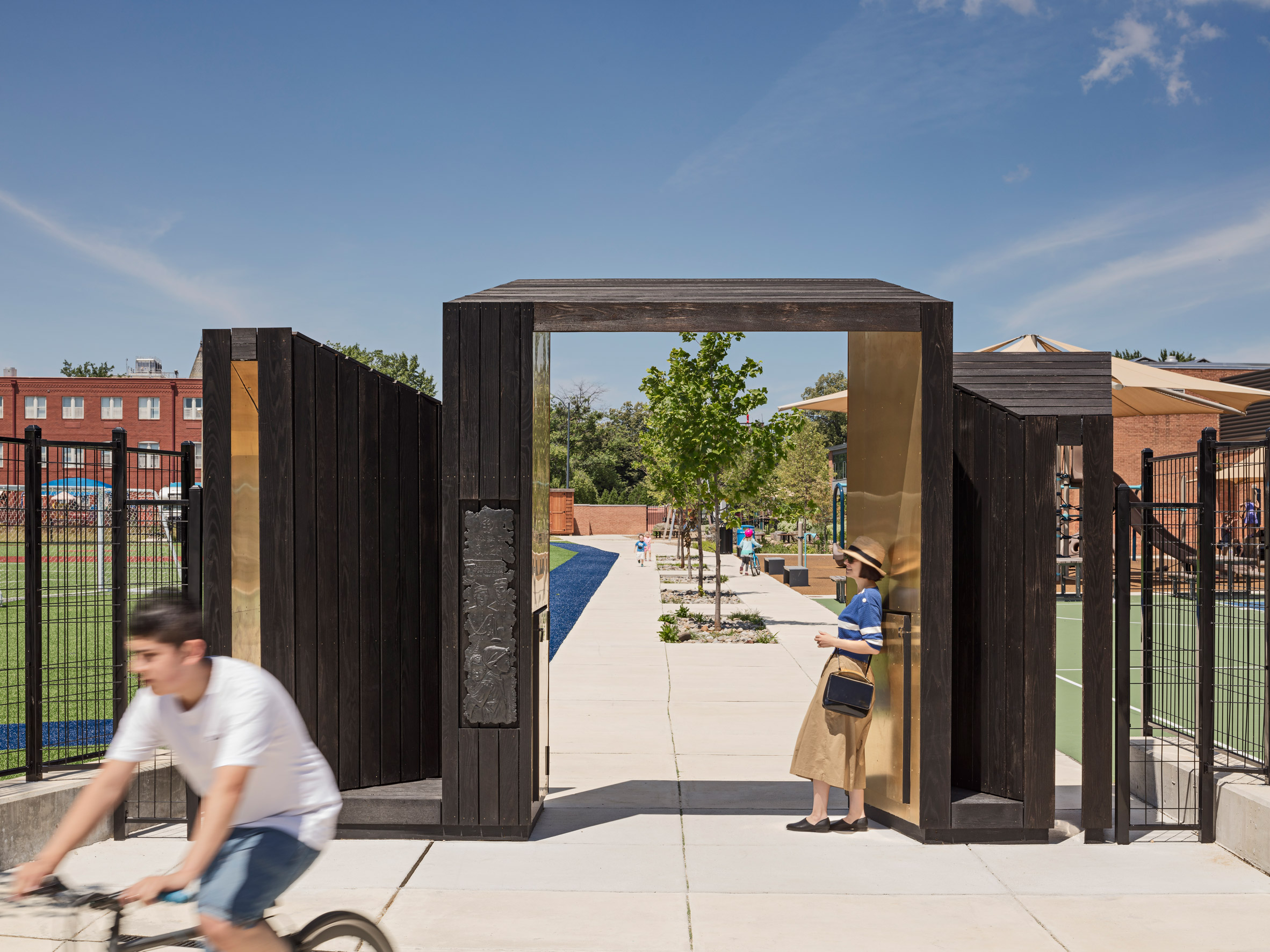
"Camp Barker Memorial simultaneously addresses the unmarked history of the site and its modern-day function as a public elementary school and popular public park," After Architecture said.
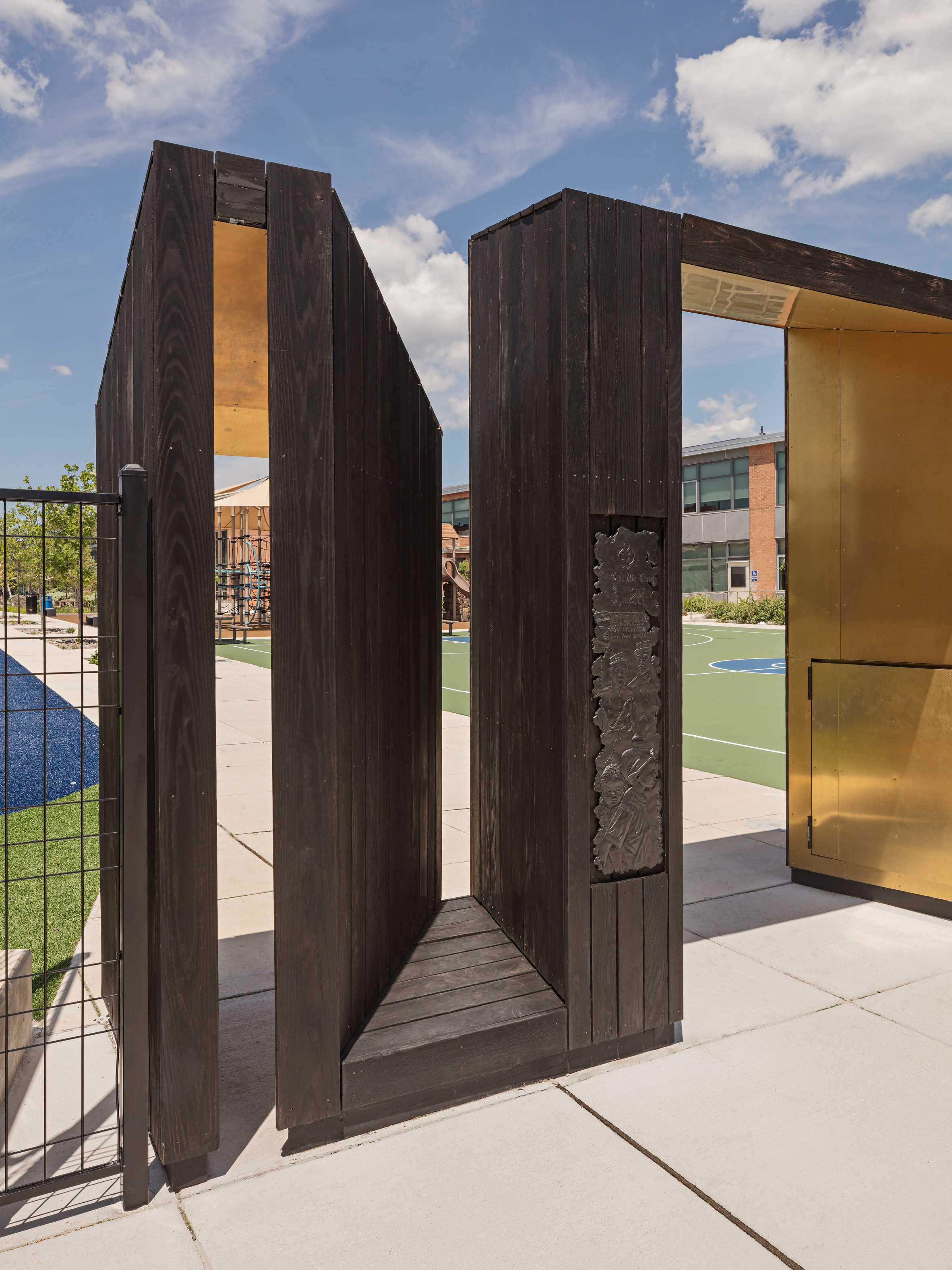
Each of the three pieces creates a gateway into the public space and takes on its own unique form. The portals are 10.5 feet (3.2 metres) tall, while their widths range from 6.5 feet (1.9 metres) to 16 feet (4.8 metres).
The largest incorporates small habitable spaces into its design by attaching additional structures on each side of the main frame.
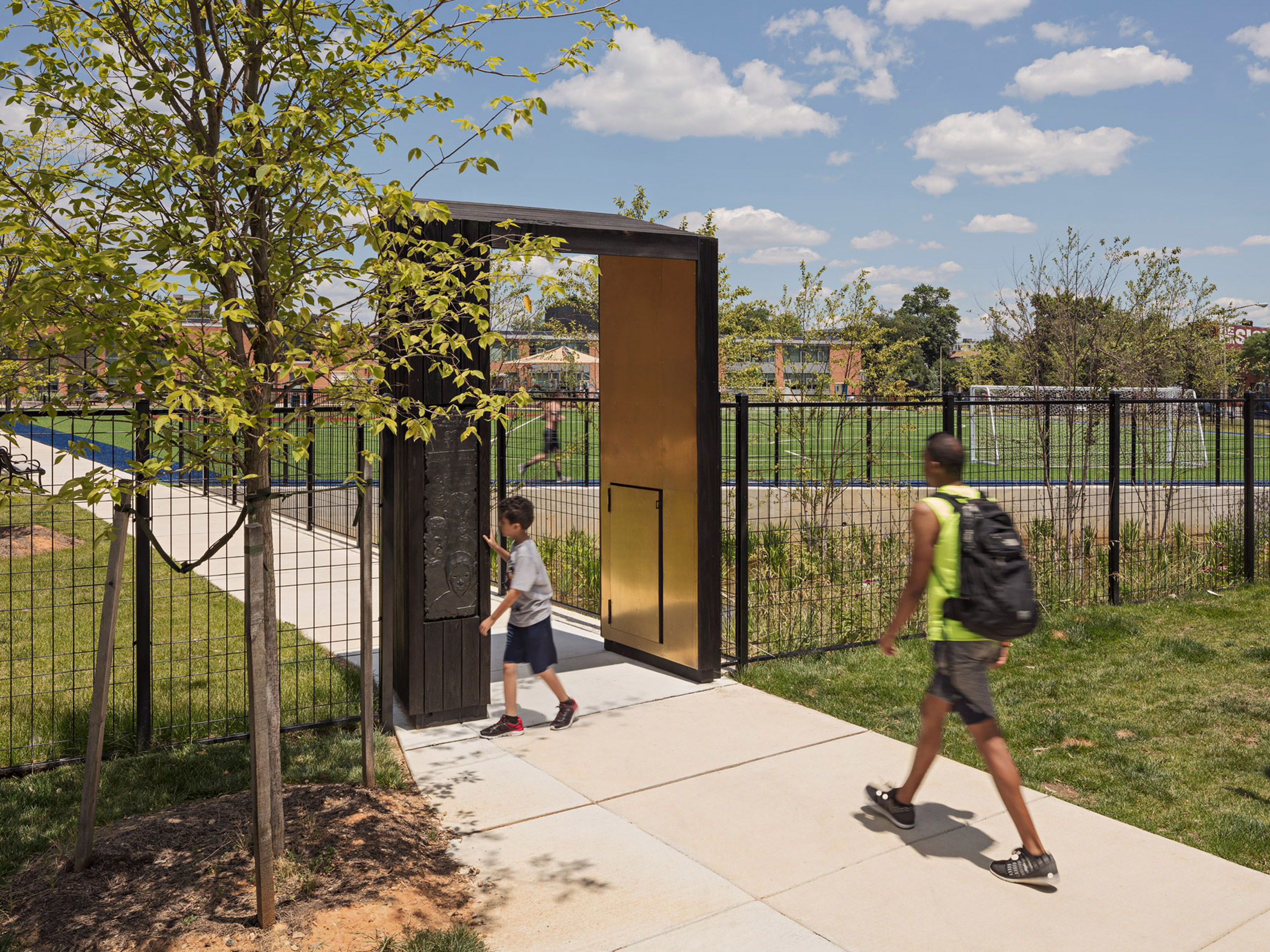
"Traditionally, a memorial takes form as a singular monument within the landscape, acting as a destination to be visited," studio co-founder Kyle Schumann added.
"Taking the memorial off its pedestal and making it into a space allows it to be accessible to everyone – it becomes a structure that can be walked through, touched, and inhabited."
The architects chose to use wooden panels, which are charred black to make them durable from weather, rot, fire and insects.
"The exterior surfaces of each portal are clad in charred wood that recalls the strength and hardship of the community that grew out of this camp," the studio added.
Brass gates that operate on a hinge neatly fold into the interior walls of the entrance, which are also lined with the material. Upon standing inside the pieces visitors can view clouded outlines of themselves, but not prominent features.
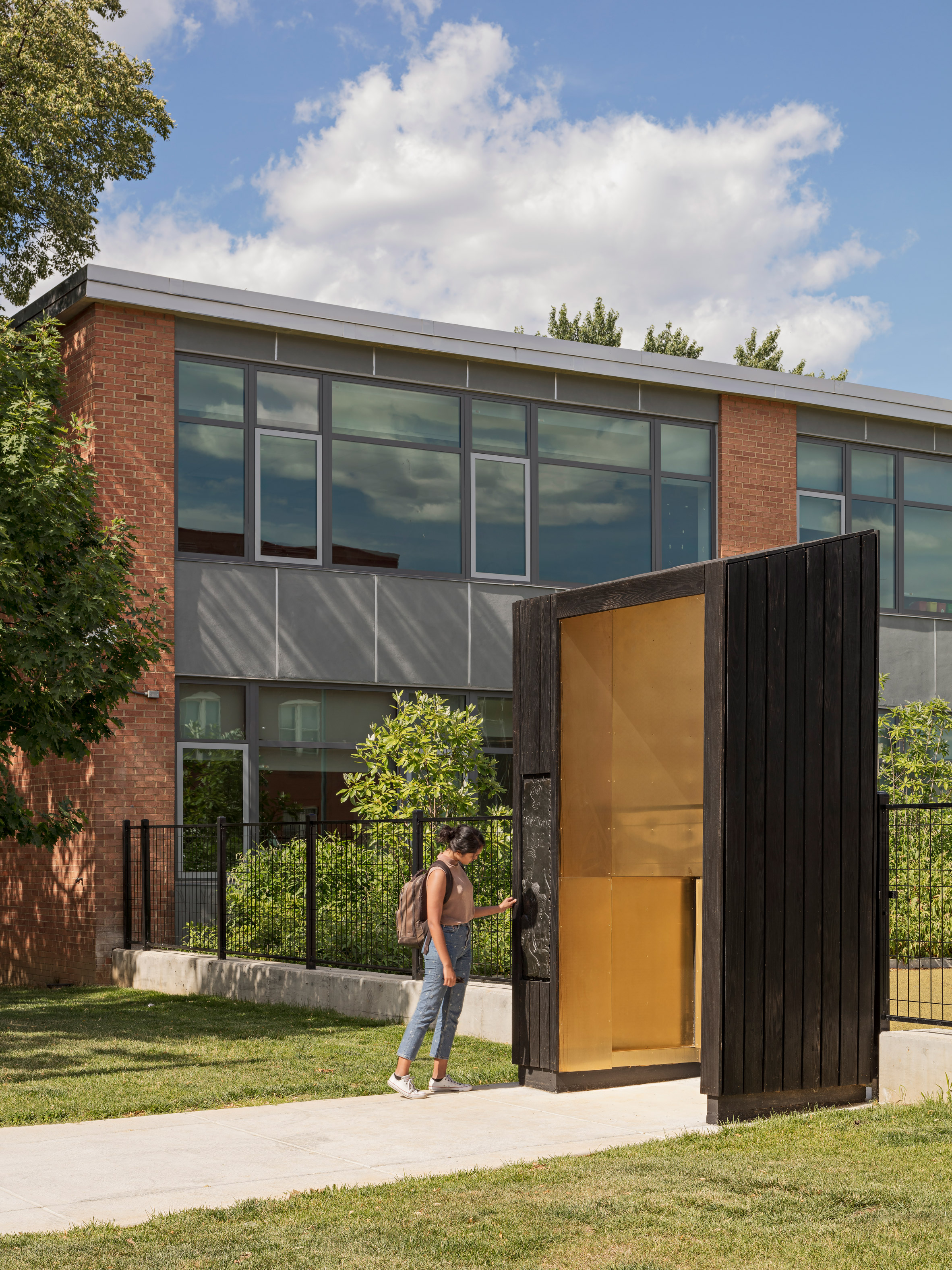
"This blurred reflection creates a kind of visible ghost that removes personal identity in favour of a shared human condition," After Architecture said.
Recessed onto the facades of each portal are blackened bronze bas relief sculptures made by artist Vinnie Bagwell. The panels detail famous African American, such as Frederick Douglass and Sojourner Truth and historical text like "We the People."
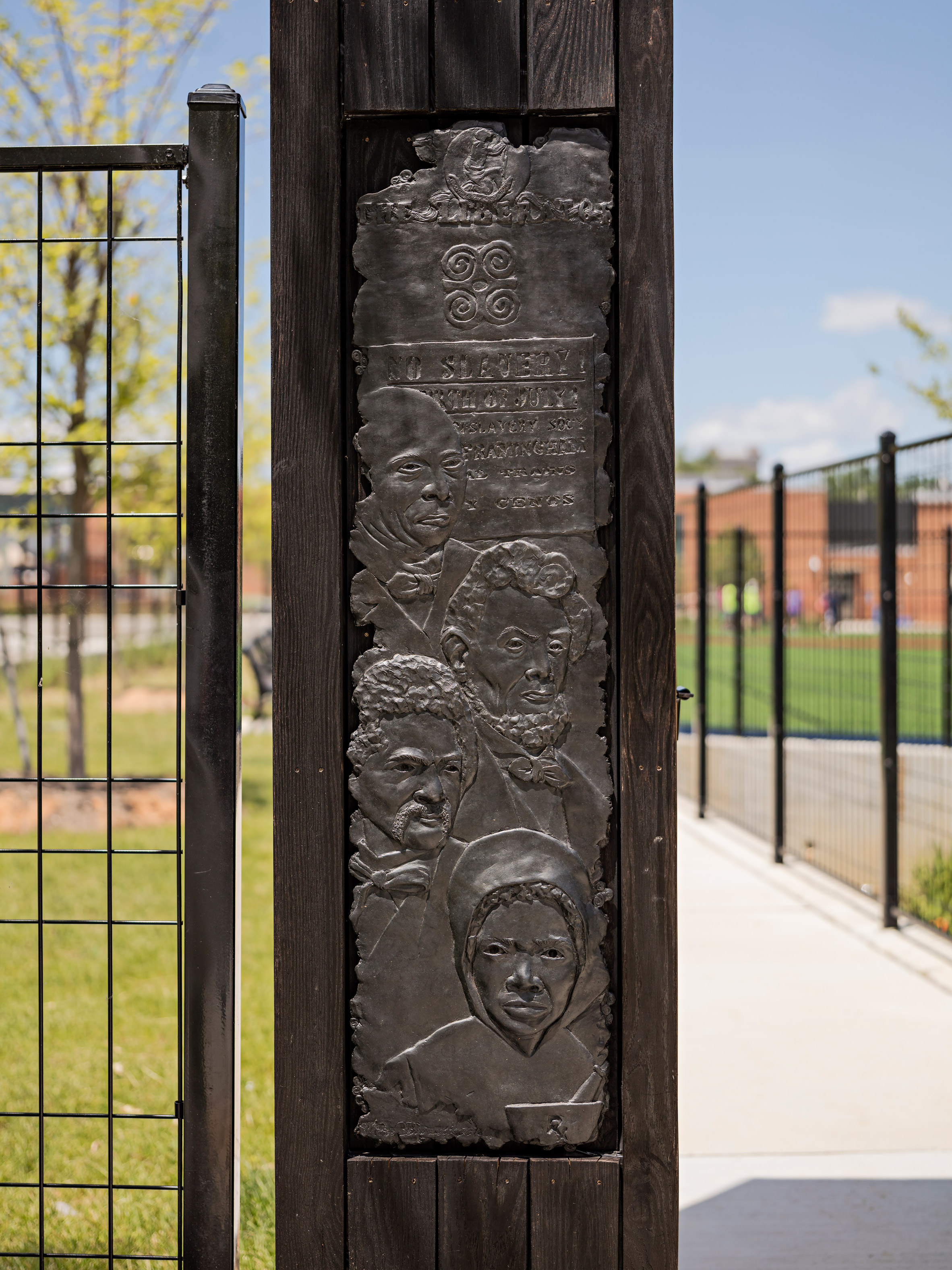
After Architecture's small installations follows others that are creating monuments to address past discrimination against African Americans. Last year, MASS Design Group created the National Memorial for Peace and Justice, an outdoor memorial in Alabama that acknowledges the history of injustice towards African Americans.
Photography is by Sam Oberter.
The post After Architecture couples charred wood and brass for Camp Barker Memorial appeared first on Dezeen.
https://ift.tt/2mXQdji
twitter.com/3novicesindia
No comments:
Post a Comment